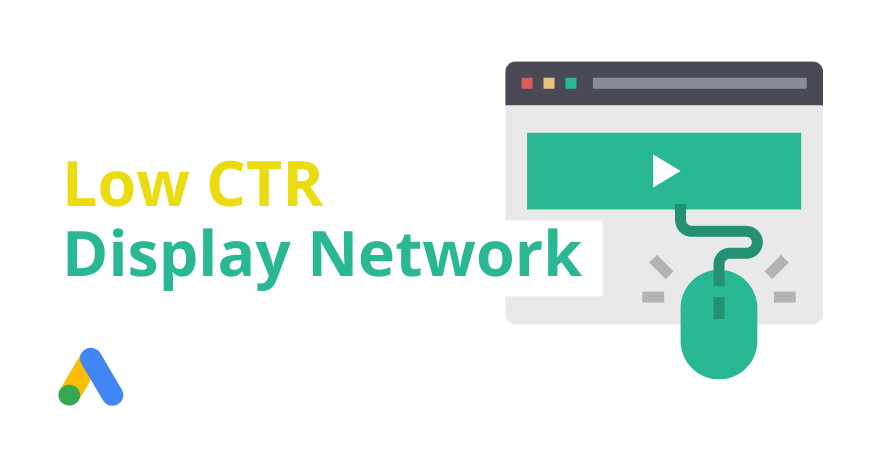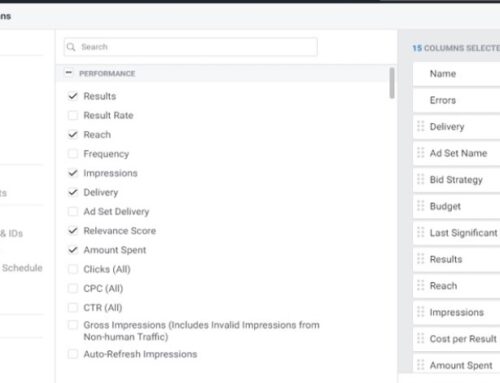Low CTR on Display Network
Having a low CTR on Display Network means that fewer people are clicking on your ads. We know this because CTR is calculated by clicks/impressions. So your ads are serving but not getting clicked on. What is the reason?
Before we begin to dissect the problem, you need to be clear of the difference between viewable impressions and impressions. They are not the same metric and serve different purposes. Viewable impressions measure when your ad is viewable, and impressions measure when the ad is rendered on the page. In this way, viewable impressions will always be lower than impressions. The criteria of a viewable ad are as follows:
- For display ads, 50% of your ad must be on the viewport for at least 1 second.
- For video ads, 50% of your video must be on the viewport and plays for at least 2 seconds.
Google Ads uses Active View technology to track if the ad appears on the viewport for the user. Anytime an ad matches these criteria, it is counted as a viewable impression. For the rest of the blog, we will annotate viewable impressions as VI.
If your client’s average CTR for display is 1%, and you find that one of his ads or ad groups has a very low CTR of, let’s say, 0.2%. We know something is amiss. But first, check that the data is statistically significant, meaning that it has run for at least a while and accumulated enough data for us to analyze accurately.
Check viewability reports
If your ad is not viewable, the user can’t click. Like mentioned earlier, Google Ads uses Active View technology to track if the ad appears on the viewport for the user.
Enabling the VI. distribution metric within your charts will show you what percentage of your display ads are actually being shown to the user. If this metric is ridiculously low, say 30-40%, this means that over 50-60% of your ads are rendered in places on the page that the user doesn’t even see. This is usually the case with below-the-fold placements or placements on poor-quality sites.
Next, go to display campaign, click on ‘where ads showed’, and apply the viewability metrics. This will show you on which sites where your VI is low. If you find placements with low VI + low CTR, excluding them will improve your ad CTR over time. Because in this way, your ads will show less often on sites with low VI and low CTR.
You may still want to keep placements with low VI and high CTR, especially if users are converting. This means that while your ads are engaging enough users, you are getting low-quality placements on that particular site.
In most cases, it is not an issue since our bottom line is conversions and revenue. However, if you are running campaigns for reach and brand awareness, high-quality placements and VI will be more important.
Update your creatives
The second reason why your CTR may be low, is the ad. If your ad is mundane and offers no unique value propositions (or U.S.P.), it is hard to get users to be interested enough to click. People do not click anything that is not interesting or directly benefits them. Read our blog post on how to write how performing Google Ads.
The point of the ad is to sell, be convincing, and be helpful. An ad telling users to click to redeem a $50 voucher off their next car service will garner much more interest than a generic ad. This doesn’t necessarily have to be monetary. Your business could be offering a free extended warranty, free returns & exchanges, a free sample, free shipping to the user. Communicating your value is the key to high CTR.
Check your audiences
Showing ads to irrelevant audiences can affect CTR. For example, your ad for baby clothes is as good as useless when running towards singles and non-parents. This is a key point to note within Display Advertising. While the audience range is vast and often difficult to manage, leveraging 1st party data that you collect on your existing customers, site visitors, and relevant 3rd party audience targeting will help boost your CTR.
Show to a more relevant audience, and your CTR naturally goes up.
Check your ad frequency
This is a less obvious one, but if your ads are being shown to the same people repeatedly, it will cause low CTR to be registered. Why?
Users may click the first time, but if the same user sees the ad over and over again, it is unlikely that they will click on it again, especially if they have already purchased or shown interest! So, limiting your ad frequency can boost CTR. Setting it to 7-10 times a week, for example, so that a small number of users will not be taking up a large amount of the impressions generated on your account.
Low CTR is an issue
Low CTR is not easy to solve, as it requires you to go “under the hood” and have a firm understanding of certain advertising metrics, principles, and some human psychology of ad writing.
All advertising is sales without the presence of a salesman. A low CTR means that your ad is doing a lot of prospecting but turning a few heads. It usually can be traced down to one of these 4 issues listed above. Conversely, an engaging, powerful ad usually comes with high CTR because it interests users.





